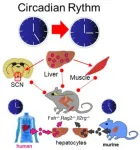MINNEAPOLIS – Getting regular exercise such as cycling, walking, gardening, cleaning and participating in sports may decrease the risk of developing Parkinson’s disease, according to new research published in the May 17, 2023, online issue of Neurology®, the medical journal of the American Academy of Neurology. The study found female participants who exercised the most had a 25% lower rate of Parkinson’s disease when compared to those who exercised the least. The study does not prove that exercise lowers the risk of developing Parkinson’s disease. It only shows an association.
“Exercise is a low-cost way to improve health overall, so our study sought to determine if it may be linked to a lower risk of developing Parkinson’s disease, a debilitating disease that has no cure,” said study author Alexis Elbaz, MD, PhD, of the Inserm Research Center in Paris, France. “Our results provide evidence for planning interventions to prevent Parkinson’s disease.”
The study included 95,354 female participants, mostly teachers, with an average age of 49 who did not have Parkinson’s disease at the start of the study. Researchers followed participants for three decades during which 1,074 participants developed Parkinson’s disease.
Over the course of the study, participants completed up to six questionnaires about the types and amounts of physical activity they were getting. They were asked how far they walked and how many flights of stairs they climbed daily, how many hours they spent on household activities as well as how much time they spent doing moderate recreational activities such as gardening and more vigorous activities such as sports.
Researchers assigned each activity a score based on the metabolic equivalent of a task (METs), a way to quantify energy expenditure. For each activity, METs were multiplied by their frequency and duration to obtain a physical activity score of METs-hours per week. For example, a more intense form of exercise like cycling was six METs, while less intense forms of exercise such as walking and cleaning were three METs. The average physical activity level for participants was 45 METs-hours per week at the start of the study.
Participants were divided into four equal groups of just over 24,000 people each. At the start of the study, those in the highest group had an average physical activity score of 71 METs-hours per week. Those in the lowest group had an average score of 27 METs-hours per week.
Among the participants in the highest exercise group, there were 246 cases of Parkinson’s disease or 0.55 cases per 1,000 person-years compared to 286 cases or 0.73 per 1,000 person-years among participants in the lowest exercise group. Person-years represent both the number of people in the study and the amount of time each person spends in the study.
After adjusting for factors such as place of residence, age of first period and menopausal status, and smoking, researchers found those in the highest exercise group had a 25% lower rate of developing Parkinson’s disease than those in the lowest exercise group when physical activity was assessed up to 10 years before diagnosis; the association remained when physical activity was assessed up to 15 or 20 years before diagnosis. Results were similar after adjusting for diet or medical conditions such as high blood pressure, diabetes and cardiovascular disease.
Researchers also found that 10 years before diagnosis, physical activity declined at a faster rate in those with Parkinson’s disease than in those without, likely due to early symptoms of Parkinson’s disease.
“With our large study, not only did we find that female participants who exercise the most have a lower rate of developing Parkinson’s disease, we also showed that early symptoms of Parkinson’s disease were unlikely to explain these findings, and instead that exercise is beneficial and may help delay or prevent this disease,” said Elbaz. “Our results support the creation of exercise programs to help lower the risk of Parkinson’s disease.”
A limitation of the study was that participants were mostly health-conscious educators who volunteered to participate in a long-term study, so results may be different for the general population.
The study was supported by General Mutual of National Education, the Gustave Roussy Institute, the French League Against Cancer and the French National Research agency.
Learn more about Parkinson’s disease at BrainandLife.org, home of the American Academy of Neurology’s free patient and caregiver magazine focused on the intersection of neurologic disease and brain health. Follow Brain & Life® on Facebook, Twitter and Instagram.
When posting to social media channels about this research, we encourage you to use the hashtags #Neurology and #AANscience.
The American Academy of Neurology is the world’s largest association of neurologists and neuroscience professionals, with over 40,000 members. The AAN is dedicated to promoting the highest quality patient-centered neurologic care. A neurologist is a doctor with specialized training in diagnosing, treating and managing disorders of the brain and nervous system such as Alzheimer’s disease, stroke, migraine, multiple sclerosis, concussion, Parkinson’s disease and epilepsy.
For more information about the American Academy of Neurology, visit AAN.com or find us on Facebook, Twitter, Instagram, LinkedIn and YouTube.
END
Can exercise lower the risk of developing Parkinson’s disease?
New study finds lower rates in female participants who exercised the most
2023-05-17
(Press-News.org)
ELSE PRESS RELEASES FROM THIS DATE:
Worldwide stroke deaths expected to increase to nearly 5 million by 2030
2023-05-17
MINNEAPOLIS – The number of deaths worldwide from ischemic stroke increased from 2 million in 1990 to more than 3 million in 2019, and is expected to increase to nearly 5 million by 2030, according to a study published in the May 17, 2023, online issue of Neurology®, the medical journal of the American Academy of Neurology. The study focused on ischemic stroke, which is caused by a blockage of blood flow to the brain and is the most common type of stroke.
“This increase in the global death toll of ischemic stroke along with a predicted further increase in the future is concerning, ...
An electric vehicle battery for all seasons
2023-05-17
Many owners of electric vehicles worry about how effective their battery will be in very cold weather. Now a new battery chemistry may have solved that problem.
In current lithium-ion batteries, the main problem lies in the liquid electrolyte. This key battery component transfers charge-carrying particles called ions between the battery’s two electrodes, causing the battery to charge and discharge. But the liquid begins to freeze at sub-zero temperatures. This condition severely limits the effectiveness of charging electric ...
One step closer to developing a potentially ultraprotective sunscreen from our own melanin
2023-05-17
A new discovery about the structure of melanin has brought scientists one step closer to developing a new, potentially ultra-protective sunscreen derived from a biological substance found in nearly all organisms. Researchers from McGill’s Department of Chemistry, in collaboration with The Ohio State University and the University of Girona, have announced a major advance in understanding the fundamental structure of melanin and one of its components that turns light into heat, protecting the body from sun damage.
Melanin, the pigment that gives humans their skin, eye, and hair colour, is the body’s first and best natural defense against the sun’s ...
Siblings can "pave the way" when they have a similar "Big Five" personality - with introverted siblings being more likely to leave home once their similarly introverted brother or sister has done so
2023-05-17
Siblings can "pave the way" when they have a similar "Big Five" personality - with introverted siblings being more likely to leave home once their similarly introverted brother or sister has done so
###
Article URL: https://journals.plos.org/plosone/article?id=10.1371/journal.pone.0284808
Article Title: Do birds of a feather leave the nest together? The role of sibling personality similarity in the transition to adulthood
Author Countries: Belgium.
Funding: This research has been made possible through the grant Nr. G017519N ...
Households whose "heads" score highly for openness and conscientiousness are more likely to make higher charitable donations, according to Chinese study incorporating "Big Five" personality traits
2023-05-17
Households whose "heads" score highly for openness and conscientiousness are more likely to make higher charitable donations, according to Chinese study incorporating "Big Five" personality traits
###
Article URL: https://journals.plos.org/plosone/article?id=10.1371/journal.pone.0284798
Article Title: A study on the influence of personality characteristics on household charitable donation behavior in China
Author Countries: China
Funding: Funding was provided by Shenzhen Key Research ...
Sustainable agriculture is building peace in Colombia
2023-05-17
In areas of Colombia once controlled by guerillas, conflicts over land continue and deforestation has risen considerably. But it’s in these same areas that researchers have found that farmers implementing sustainable land use systems, like agroforestry driven by cocoa (one of the key ingredients of chocolate), has contributed to reducing conflicts.
Deforestation and Conflict
In 2016, the government of Colombia signed a peace treaty with the guerilla group Revolutionary Armed Forces of Colombia (FARC, for its initials in Spanish) and in the following years, forested areas formerly controlled by the FARC saw an influx of other illegal actors, contributing ...
Australian nanomedicine research a ‘milestone’ in the treatment of childhood cancer
2023-05-17
Australian nanomedicine researchers have come up with a new approach to solving a decades-old clinical problem: getting treatment drugs to act selectively on cancer cells in the body. Published this week in the high-impact journal Science Translational Medicine, the research paves the way to safer and more effective treatment options for children with aggressive blood cancers, and potentially other types of cancer as well.
Chemotherapy is the mainstay of treatment for leukaemia, the most common blood cancer in children. However, while chemotherapy can be very effective for certain types of leukaemia, ...
Scales or feathers? It all comes down to a few genes
2023-05-17
Scales, spines, feathers and hair are examples of vertebrate skin appendages, which constitute a remarkably diverse group of micro-organs. Despite their natural multitude of forms, these appendages share early developmental processes at the embryonic stage. Two researchers from the University of Geneva (UNIGE) have discovered how to permanently transform the scales that normally cover the feet of chickens into feathers, by specificially modifying the expression of certain genes. These results, published in the journal Science Advances, open new perspectives for studying mechanisms that have enabled radical evolutionary ...
New study explains how a common virus can cause multiple sclerosis
2023-05-17
Researchers at Karolinska Institutet in Sweden have found further evidence for how the Epstein-Barr virus can trigger multiple sclerosis or drive disease progression. A study published in Science Advances shows that some individuals have antibodies against the virus that mistakenly attack a protein in the brain and spinal cord.
The Epstein-Barr virus (EBV) infects most people early in life and then remains in the body, usually without causing symptoms. The link between EBV and the neurological disease multiple sclerosis (MS) was discovered many years ago and has puzzled ...
Liver cells control our biological clock
2023-05-17
Organisms rely on a biological clock known as the ‘circadian’ clock to regulate their activity according to the time of day. A central clock, constituted by a group of brain cells — the suprachiasmatic nuclei, or SCN — synchronises the circadian clocks present in all body’s organs, called ‘peripheral’ clocks. Until now, synchronisation of the circadian cycle in mammals was thought to be a one-way mechanism in which the suprachiasmatic nuclei alone synchronized the peripheral ...
LAST 30 PRESS RELEASES:
Scientists trace microplastics in fertilizer from fields to the beach
The Lancet Obstetrics, Gynecology, & Women’s Health: Taking paracetamol during pregnancy does not increase risk of autism, ADHD or intellectual disabilities, confirms new gold-standard evidence review
Taking paracetamol during pregnancy does not increase risk of autism, ADHD or intellectual disabilities
Harm reduction vending machines in New York State expand access to overdose treatment and drug test strips, UB studies confirm
University of Phoenix releases white paper on Credit for Prior Learning as a catalyst for internal mobility and retention
Canada losing track of salmon health as climate and industrial threats mount
Molecular sieve-confined Pt-FeOx catalysts achieve highly efficient reversible hydrogen cycle of methylcyclohexane-toluene
Investment in farm productivity tools key to reducing greenhouse gas
New review highlights electrochemical pathways to recover uranium from wastewater and seawater
Hidden pollutants in shale gas development raise environmental concerns, new review finds
Discarded cigarette butts transformed into high performance energy storage materials
Researchers highlight role of alternative RNA splicing in schizophrenia
NTU Singapore scientists find new way to disarm antibiotic-resistant bacteria and restore healing in chronic wounds
Research suggests nationwide racial bias in media reporting on gun violence
Revealing the cell’s nanocourier at work
Health impacts of nursing home staffing
Public views about opioid overdose and people with opioid use disorder
Age-related changes in sperm DNA may play a role in autism risk
Ambitious model fails to explain near-death experiences, experts say
Multifaceted effects of inward foreign direct investment on new venture creation
Exploring mutations that spontaneously switch on a key brain cell receptor
Two-step genome editing enables the creation of full-length humanized mouse models
Pusan National University researchers develop light-activated tissue adhesive patch for rapid, watertight neurosurgical sealing
Study finds so-called super agers tend to have at least two key genetic advantages
Brain stimulation device cleared for ADHD in the US is overall safe but ineffective
Scientists discover natural ‘brake’ that could stop harmful inflammation
Tougher solid electrolyte advances long-sought lithium metal batteries
Experts provide policy roadmap to reduce dementia risk
New 3D imaging system could address limitations of MRI, CT and ultrasound
First-in-human drug trial lowers high blood fats
[Press-News.org] Can exercise lower the risk of developing Parkinson’s disease?New study finds lower rates in female participants who exercised the most



